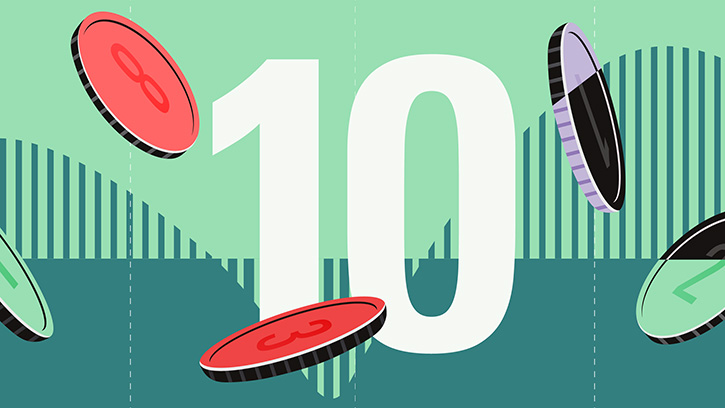
Recently my US colleague John Rekenthaler took a concerted look at US Dividend funds to answer a fairly simple question – are they any good? The answer in the US fund market was surprisingly – yes, they’ve proven themselves fit for purpose, especially when compared against traditional (non-dividend focused) equity funds. Given Rekenthaler’ s well-respected skepticism for many things (a crowning trait of great investors), I wanted to know how his analysis of dividend funds might look in Canadian markets.
In his article “Are Dividend Funds All That?,” he put the US dividend funds through five litmus tests including (1) whether investors have invested in them lately, (2) their defensive properties during bear markets, (3) their longer-dated returns during bull markets, (4) their ability to produce income, and (5) their survival rates.
For these tests, Rekenthaler created a universe of dividend funds out of the broader US equities peer group using a keyword search on the word “dividend” in the funds’ names and compared it against a universe of large-cap value funds. For an analysis of the Canadian market, a universe was created using the CIFSC category for dividend funds (formerly labelled as Canadian Dividend & Income Equity funds), which includes a formal lower yield limit requirement tied to an equity benchmark index.
(1) Do Canadian Investors Love them? (TLDR; No, not really)
Though our readership figures tell us that Canadian investors absolutely love reading about dividend investin, when it comes to picking a mutual fund or ETF, it seems like on aggregate, Canadians are putting their money toward more traditional equity funds:
Over the last two calendar years, investors on aggregate sold $3.5 billion worth of dividend mutual funds and ETFs and purchased $5.2 billion in traditional Canadian equity funds and ETFs, according to Morningstar’s estimated net asset flows calculations. This data indicates that over the recent past (a time that was rife with market volatility and uncertainty), Canadian investors interestingly invested more in traditional equity funds than dividend funds.
(2) How did they do during bear markets? (TLDR; Not bad, but not bulletproof)
Companies that pay consistent dividends are usually quite mature, often participating in non-cyclical parts of the economy (for example, utility companies can be quite steady dividend payers). As such, there might be an expectation on the investor’s part that dividend funds (which in concept are a diversified portfolio of dividend payers) might have more defensive characteristics during a bear market. In Canada, it seems that this is somewhat the case:
The above chart compares the average Canadian dividend fund’s performance against traditional Canadian equity funds and the S&P/TSX Composite TR index for recent calendar years where the index posted negative returns. In all cases, dividend funds outperformed traditional equity funds (by losing less). This said it’s important not to exaggerate the effects – both in 2015 and 2018, dividend funds only managed to outperform traditional equity funds marginally. We must also remember that the category does not accurately portray every single fund’s performance. Moreover, in 2018 and 2022, both types of funds lost to the broad equity index during a rapid shift in the interest rate environment.
A Quick Aside: What Rising Interest Rates Mean for Dividend Payers
Dividends are driven by company management. Every quarter, company management must decide whether they are going use cash to fund operations (for R&D, or for capital expenditures like buying new equipment or property) or pay back investors via dividends, share buybacks, or by retiring debt. When interest rates go up, the company’s costs go up in two ways: (1) it now costs the company more in interest payments to pay their debt obligations and (2) because the cost of debt has gone up, stock investors now expect a higher return on their equity. Equity investors take on more risk than bond investors, and hence expect a higher rate of return. Because this ‘expected’ rate of return is higher, companies will feel the pressure to increase dividends, otherwise, shareholders can find a higher return elsewhere.
(3) How have dividend funds treated investors in bull markets? (TLDR; More or less like a regular Canadian equity fund)
Investors are reminded that dividends are a measure of how you get paid, not a measure of how much wealth you’ve gained. Both are important. How you get paid is important in retirement because retirees rely on monthly cash flow to pay for expenses. How much wealth you’ve gained is important as it is a measure of whether you can retire at all. To the latter point, the below outlines the average performance of Canadian dividend funds vs. traditional Canadian equity funds over the last 15 or so years:
This chart outlines a point that Rekenthaler makes: Dividend funds are less defensive than holding cash or fixed income, reliably losing when equities fall. Hence to justify their existence, then, they must post acceptable gains when equities rise. To this end, dividend funds should end up in the same boat as a traditional equity funds. As the data shows, an investor who chose a dividend income fund ended up more or less in the same spot as one who chose a more traditional Canadian equity fund from a total return standpoint. However, this does not account for tax effects. Canadian tax law favours capital gains, dividends, then bond coupon payments in that order. As such, dividend investors end up paying more tax than those focused on capital gains, which is a drag on compounding returns.
(4) How much more income do they pay compared to traditional equity funds? (TLDR; about 1% more over the last 5 years)
On average, dividend funds yield roughly 1% more on an annual basis than traditional equity funds. Though 1% does not sound like much, investors are reminded that we were coming out of an ultra-low interest rate environment, hence an extra 1% will be quite noticeable for an income-oriented investor.
(5) Inception Dates & Survival Rates (TLDR; Survival rates of dividend funds are higher than that of equity funds over the last 15+ years).
Morningstar’s work on thematic fund closers teaches an important lesson – faddish products that claim to invest across industries following a particular trend or theme rarely outperform a broad equity stock index. Moreover, many of these products end up being liquidated which generally will have negative impacts on an investor’s portfolio (whether it be from losses, or a forced tax event if the fund is not merged into another). Dividend funds did not succumb to this pattern over the last decade and half. In 2006, there were 106 Canadian domiciled dividend funds on the market and 229 traditional Canadian equity funds. Over the ensuing 17 years, 64 dividend funds closed their doors, which is quite a few – but pales in comparison with the 149 Canadian equity funds that were closed over the same period. In other words, a higher proportion of equity funds were closed than dividend funds – which have generally stuck around.
Conclusions:
Although dividend funds have seen outflows over the last two years (while traditional Canadian equity funds have seen inflows), they have shown somewhat defensive characteristics during bear markets. On a trailing 15-year basis, investors in dividend funds have ended up more or less in the same spot as those invested in Canadian equity funds. Finally, the survivorship rates of dividend funds tell us that fewer dividend funds have close (as a proportion of the total) when compared to Canadian equity funds.
Above all else, readers are reminded dividends are useful tools for those that require steady cashflows (like retirees). For investors without this requirement, the available options for equity funds and ETFs expand quite a bit and might be a worthwhile consideration, especially in light of slightly more favourable tax treatment over a dividend fund.
This article does not constitute financial advice. Investors are encouraged to conduct their own research before buying or selling any investment product or security.




















